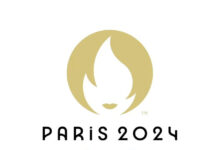
(By Jeff McHugh) Compare our industry to other entertainment. When was the last time you saw a great motion picture, television show, or play featuring one big-name star surrounded by a bunch of nobodies?
Is it better to have a radio/podcast show with a big-name star surrounded by sidekicks or an ensemble cast of equally talented players?
A strong character is stronger with other strong characters. In the excellent documentary The Power of Film, legendary UCLA professor Howard Suber explains:
“What makes most characters interesting is often not the characters themselves, but their relationships with other characters.”
An ensemble cast of characters is vital for most memorable, popular content.
In Barbie, superstar Margot Robbie needed Ryan Gosling to play Ken and may not have succeeded without Kate McKinnon’s Weird Barbie.
For Top Gun: Maverick, Tom Cruise — the world’s most bankable movie star — had super-strong partners like Val Kilmer, Ed Harris, and Jennifer Connelly, who stole scenes from Tom throughout the film.
But radio and podcasting shows are sometimes a bankable superstar primary host surrounded by merely adequate co-hosts. We call it a “big planet/little moons” show.
A big planet/little moons show can perform OK, but it rarely outperforms the station by much. Big planet/little moons shows that we compete against are beatable about 95% of the time, and big planet/little moons shows that we coach improve 100% of the time.
Consider these strategies if you compete with a show or have a show in your company featuring one strong host surrounded by weaker characters.
- Mic balance. One host dominating 75% or more of the mic time does not make for strong chemistry or character interaction. Divvy up hosting duties, have the more verbose host reduce word count while other player(s) step forward more. Show prep as a team is key to improving mic balance.
- Players either add to or take away from the show. There is no in-between. Everyone has to be good. Think of the streaming series Ted Lasso — Jason Sudekis’s title character is surrounded by an ensemble of memorable, entertaining characters. Everyone who gets even five seconds of airtime makes their part of the show better. Develop and encourage each player for improvement until your cast is like Ted Lasso’s.
- Opposites attract. Each player should be noticeably different from the others as much as possible—gender, voice, age, race, lifestyle, attitude, orientation, etc. Character contrast is the drama that drives a successful show. A character exercise defining each player’s endearing traits, quirks and flaws, hopes and fears highlights each player’s authentic personality.
- Name checking. Work in the names of each cast member before they speak in each segment. This helps familiarize new/casual listeners with your cast. On a big planet/small moon show, you often hear only the big star’s name.
- Limit mic time. If, for example, the meteorologist sticks around after the forecast to interact with the show, they must bring killer content and point of view. Shows get derailed when adding another voice without purpose.
- Eject the studio crowd. Some hosts are energized with 5,6,7 or more people in the room, but a cast of thousands all talking at once in front of open mics is confusing for listeners and dilutes airtime for your scene-stealing stars.
- One big star can be better than a team. If the content focus is music-intensive or a political talk show, one host with knowledge of the content can do an adequate job. More voices can get in the way. Also, most interviews are best 1:1, like Terry Gross of NPR’s Fresh Air or Howard Stern on Sirius XM.
Jeff McHugh is known for developing remarkable talent for both morning and afternoon drive. He brings an uncommon mix of positivity, creativity, and strategy to the shows that he coaches. He is a member of the team at the Randy Lane Company. Reach Jeff at [email protected] and read his Radio Ink archives here.









This is a very astute observation. Howard Stern was clearly at his best when he had his large cast of characters surrounding him in the 1990’s. Unfortunately, as his ratings grew, so did his ego and he drove off many of the funniest supporting players. Don Imus was always a one trick pony as was Scott Shannon, which held both of them back from achieving Stern-like ratings. This is evident with current on-air talent such as the Bert Show in Atlanta. Bert Weiss has driven away numerous co-hosts over the last decade as they grew in popularity and challenged his mic time. It has held him back from being a national talent. The Breakfast Club is feeling the opposite effect as Charlamagne breaks out more and more and the supporting cast falls further into the background. That will eventually lead to the show’s demise.
The talent balance is so critical in radio, hence the need for strong, experienced PD talent to keep it all in check. As bean counters target that role for expense savings, they’ll spend substantially more on talent turnover.